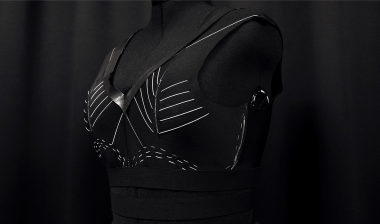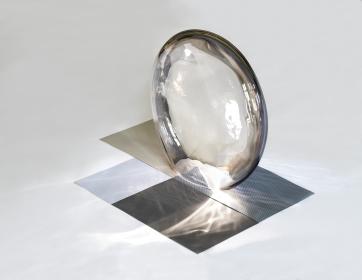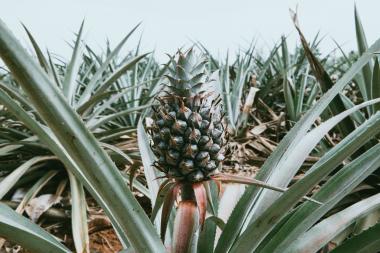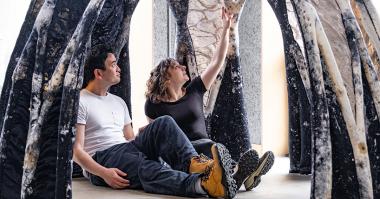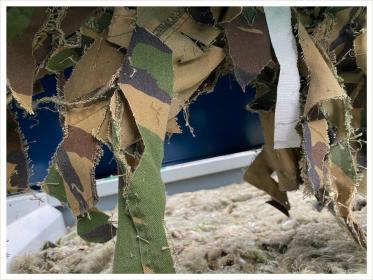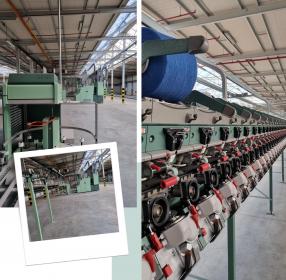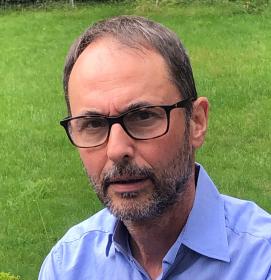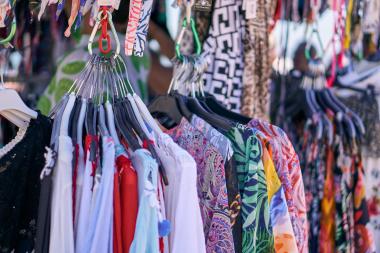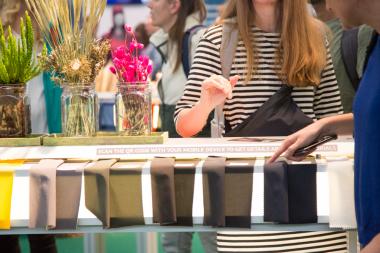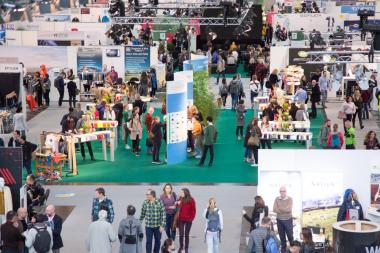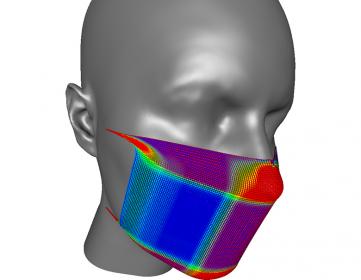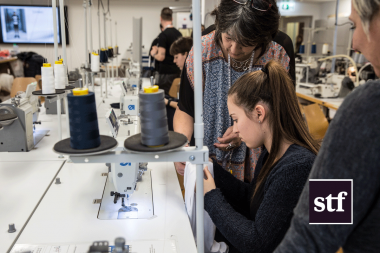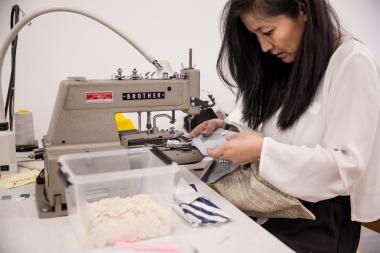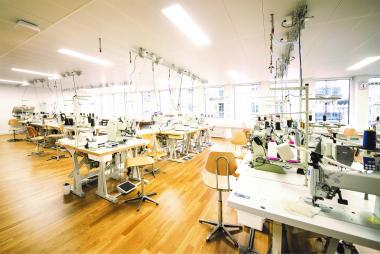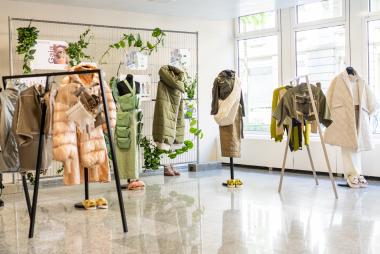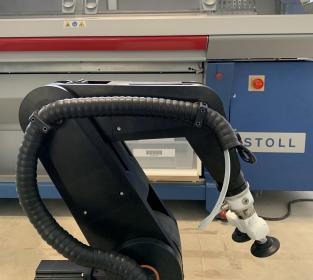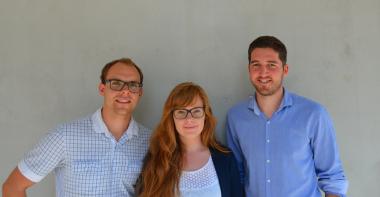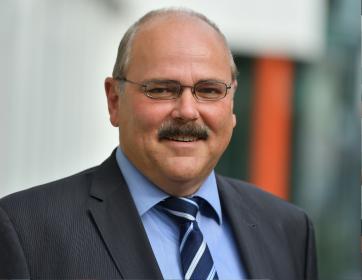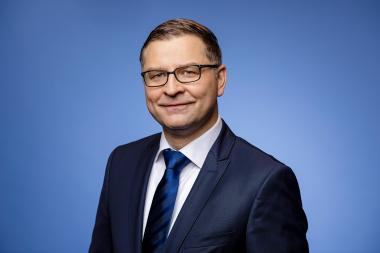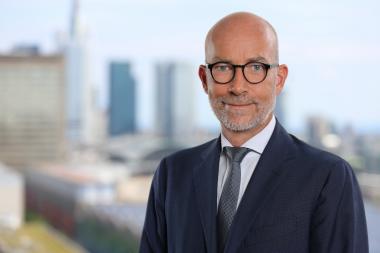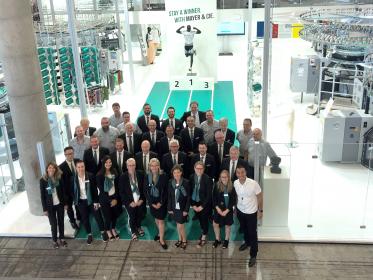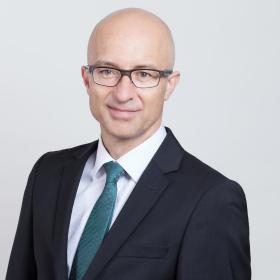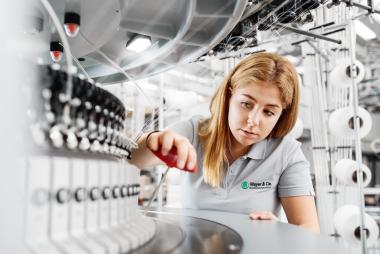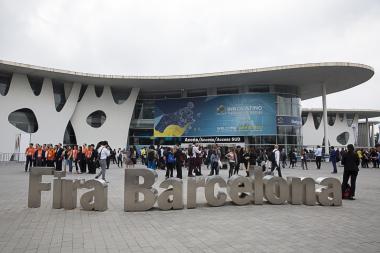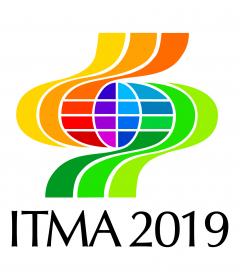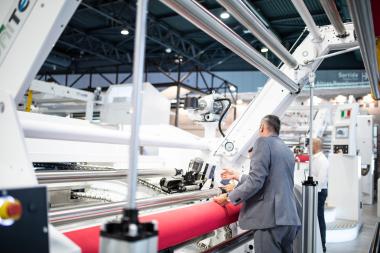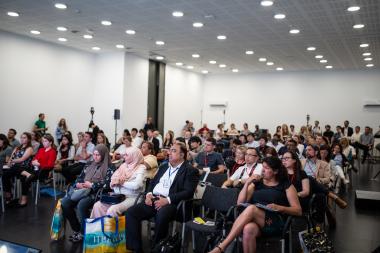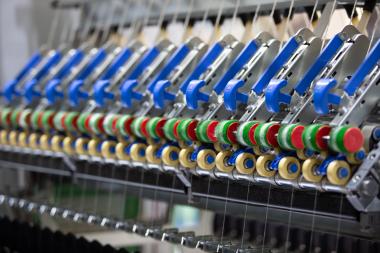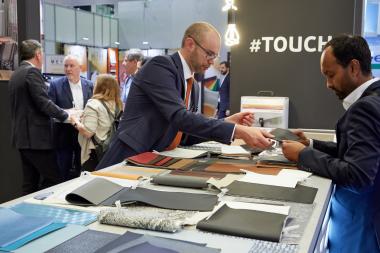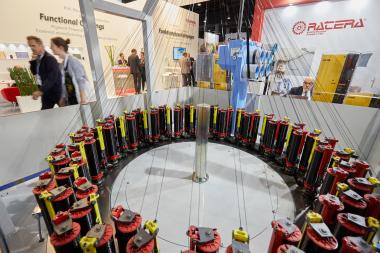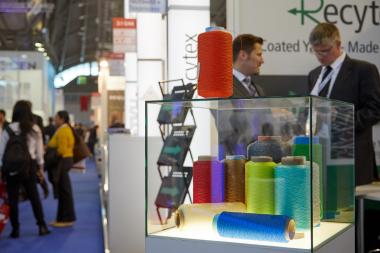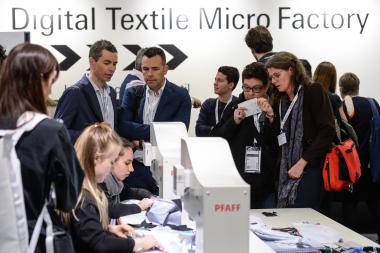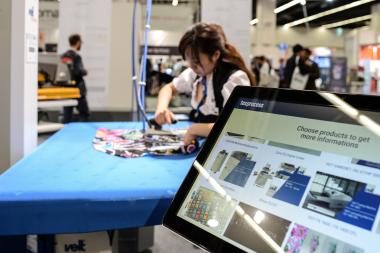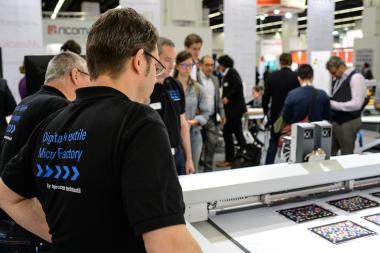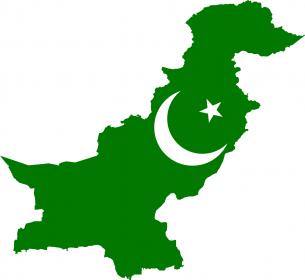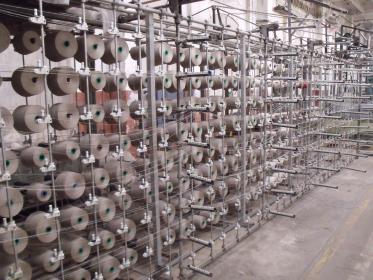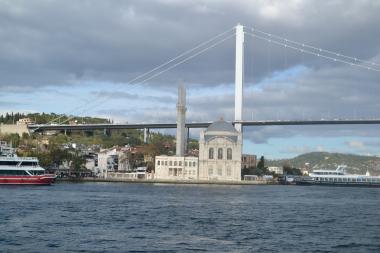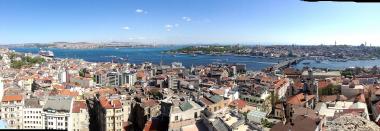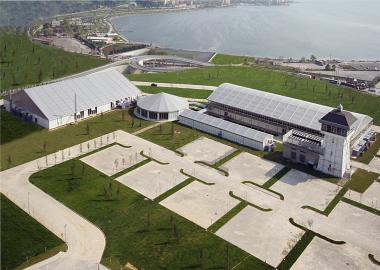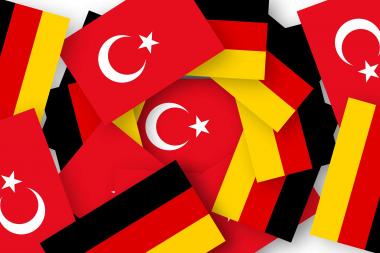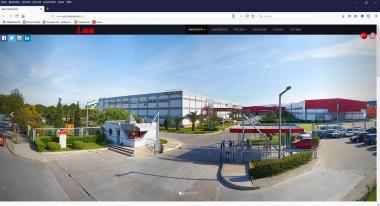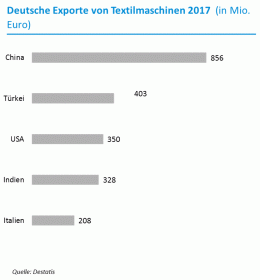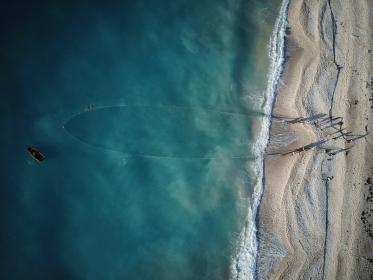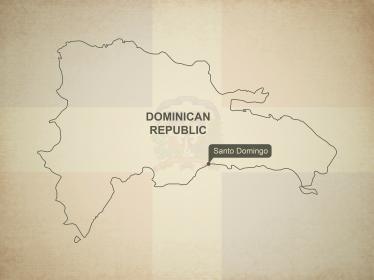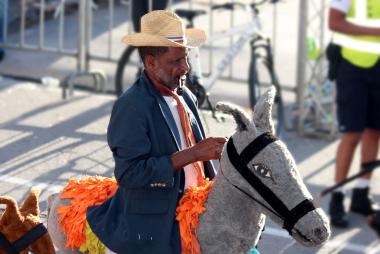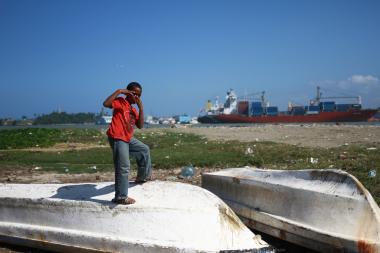Shape-shifting fiber can produce morphing fabrics
The low-cost FibeRobo, which is compatible with existing textile manufacturing techniques, could be used in adaptive performance wear or compression garments.
Researchers from MIT and Northeastern University developed a liquid crystal elastomer fiber that can change its shape in response to thermal stimuli. The fiber, which is fully compatible with existing textile manufacturing machinery, could be used to make morphing textiles, like a jacket that becomes more insulating to keep the wearer warm when temperatures drop.
Instead of needing a coat for each season, imagine having a jacket that would dynamically change shape so it becomes more insulating to keep you warm as the temperature drops.
A programmable, actuating fiber developed by an interdisciplinary team of MIT researchers could someday make this vision a reality. Known as FibeRobo, the fiber contracts in response to an increase in temperature, then self-reverses when the temperature decreases, without any embedded sensors or other hard components.
The low-cost fiber is fully compatible with textile manufacturing techniques, including weaving looms, embroidery, and industrial knitting machines, and can be produced continuously by the kilometer. This could enable designers to easily incorporate actuation and sensing capabilities into a wide range of fabrics for myriad applications.
The fibers can also be combined with conductive thread, which acts as a heating element when electric current runs through it. In this way, the fibers actuate using electricity, which offers a user digital control over a textile’s form. For instance, a fabric could change shape based on any piece of digital information, such as readings from a heart rate sensor.
“We use textiles for everything. We make planes with fiber-reinforced composites, we cover the International Space Station with a radiation-shielding fabric, we use them for personal expression and performance wear. So much of our environment is adaptive and responsive, but the one thing that needs to be the most adaptive and responsive — textiles — is completely inert,” says Jack Forman, a graduate student in the Tangible Media Group of the MIT Media Lab, with a secondary affiliation at the Center for Bits and Atoms, and lead author of a paper on the actuating fiber.
He is joined on the paper by 11 other researchers at MIT and Northeastern University, including his advisors, Professor Neil Gershenfeld, who leads the Center for Bits and Atoms, and Hiroshi Ishii, the Jerome B. Wiesner Professor of Media Arts and Sciences and director of the Tangible Media Group. The research will be presented at the ACM Symposium on User Interface Software and Technology.
Morphing materials
The MIT researchers wanted a fiber that could actuate silently and change its shape dramatically, while being compatible with common textile manufacturing procedures. To achieve this, they used a material known as liquid crystal elastomer (LCE).
A liquid crystal is a series of molecules that can flow like liquid, but when they’re allowed to settle, they stack into a periodic crystal arrangement. The researchers incorporate these crystal structures into an elastomer network, which is stretchy like a rubber band.
As the LCE material heats up, the crystal molecules fall out of alignment and pull the elastomer network together, causing the fiber to contract. When the heat is removed, the molecules return to their original alignment, and the material to its original length, Forman explains.
By carefully mixing chemicals to synthesize the LCE, the researchers can control the final properties of the fiber, such as its thickness or the temperature at which it actuates.
They perfected a preparation technique that creates LCE fiber which can actuate at skin-safe temperatures, making it suitable for wearable fabrics.
“There are a lot of knobs we can turn. It was a lot of work to come up with this process from scratch, but ultimately it gives us a lot of freedom for the resulting fiber,” he adds.
However, the researchers discovered that making fiber from LCE resin is a finicky process. Existing techniques often result in a fused mass that is impossible to unspool.
Researchers are also exploring other ways to make functional fibers, such as by incorporating hundreds of microscale digital chips into a polymer, utilizing an activated fluidic system, or including piezoelectric material that can convert sound vibrations into electrical signals.
Fiber fabrication
Forman built a machine using 3D-printed and laser-cut parts and basic electronics to overcome the fabrication challenges. He initially built the machine as part of the graduate-level course MAS.865 (Rapid-Prototyping of Rapid-Prototyping Machines: How to Make Something that Makes [almost] Anything).
To begin, the thick and viscous LCE resin is heated, and then slowly squeezed through a nozzle like that of a glue gun. As the resin comes out, it is cured carefully using UV lights that shine on both sides of the slowly extruding fiber.
If the light is too dim, the material will separate and drip out of the machine, but if it is too bright, clumps can form, which yields bumpy fibers.
Then the fiber is dipped in oil to give it a slippery coating and cured again, this time with UV lights turned up to full blast, creating a strong and smooth fiber. Finally, it is collected into a top spool and dipped in powder so it will slide easily into machines for textile manufacturing.
From chemical synthesis to finished spool, the process takes about a day and produces approximately a kilometer of ready-to-use fiber.
“At the end of the day, you don’t want a diva fiber. You want a fiber that, when you are working with it, falls into the ensemble of materials — one that you can work with just like any other fiber material, but then it has a lot of exciting new capabilities,” Forman says.
Creating such a fiber took a great deal of trial and error, as well as the collaboration of researchers with expertise in many disciplines, from chemistry to mechanical engineering to electronics to design.
The resulting fiber, called FibeRobo, can contract up to 40 percent without bending, actuate at skin-safe temperatures (the skin-safe version of the fiber contracts up to about 25 percent), and be produced with a low-cost setup for 20 cents per meter, which is about 60 times cheaper than commercially available shape-changing fibers.
The fiber can be incorporated into industrial sewing and knitting machines, as well as nonindustrial processes like hand looms or manual crocheting, without the need for any process modifications.
The MIT researchers used FibeRobo to demonstrate several applications, including an adaptive sports bra made by embroidery that tightens when the user begins exercising.
They also used an industrial knitting machine to create a compression jacket for Forman’s dog, whose name is Professor. The jacket would actuate and “hug” the dog based on a Bluetooth signal from Forman’s smartphone. Compression jackets are commonly used to alleviate the separation anxiety a dog can feel while its owner is away.
In the future, the researchers want to adjust the fiber’s chemical components so it can be recyclable or biodegradable. They also want to streamline the polymer synthesis process so users without wet lab expertise could make it on their own.
Forman is excited to see the FibeRobo applications other research groups identify as they build on these early results. In the long run, he hopes FibeRobo can become something a maker could buy in a craft store, just like a ball of yarn, and use to easily produce morphing fabrics.
“LCE fibers come to life when integrated into functional textiles. It is particularly fascinating to observe how the authors have explored creative textile designs using a variety of weaving and knitting patterns,” says Lining Yao, the Cooper-Siegel Associate Professor of Human Computer Interaction at Carnegie Mellon University, who was not involved with this work.
This research was supported, in part, by the William Asbjornsen Albert Memorial Fellowship, the Dr. Martin Luther King Jr. Visiting Professor Program, Toppan Printing Co., Honda Research, Chinese Scholarship Council, and Shima Seiki. The team included Ozgun Kilic Afsar, Sarah Nicita, Rosalie (Hsin-Ju) Lin, Liu Yang, Akshay Kothakonda, Zachary Gordon, and Cedric Honnet at MIT; and Megan Hofmann and Kristen Dorsey at Northeastern University.
Massachusetts Institute of Technology MIT Northeastern University Fibers morphing fabrics
MIT and Northeastern University


